Pursuing Cleaner Technology
Though rail is the most environmentally preferred mode of surface transportation – reducing emissions, saving fuel and relieving highway congestion – BNSF is committed to exploring new ways to further reduce emissions and utilize more sustainable technology in our operations. In 2021, for example, we announced our plans to work with Progress Rail and Chevron to pilot a demonstration of a locomotive powered by hydrogen fuel cells. BNSF is also piloting zero emission technologies at our intermodal facilities, including the use of battery electric yard trucks and electric cranes.
BNSF is exploring sustainability initiatives including:
- Zero emissions locomotives (battery electric and hydrogen)
- Use of renewable fuels such as biodiesel and renewable diesel
- Idle control technology
- More fuel-efficient Tier 4 locomotives
- Automated Gate Systems
- Advanced permitting processes
- Sustainable partnerships
Learn more at www.bnsf.com/orangeisgreen.
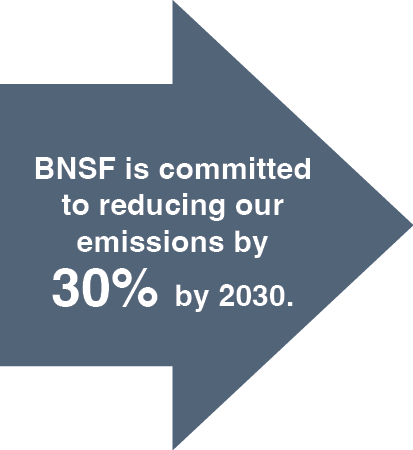
Reducing our Customers’ Carbon Impact
By shipping by rail versus the road, BNSF customers are significantly decreasing their carbon footprints. Just one double-stack intermodal train removes several hundred long-haul freight trucks from the highway. No other form of land freight transportation is more fuel- and resource-efficient than rail.
In 2021, shipping with BNSF enabled our customers to reduce their total carbon emissions by 21 million metric tons. This carbon savings is equivalent to:
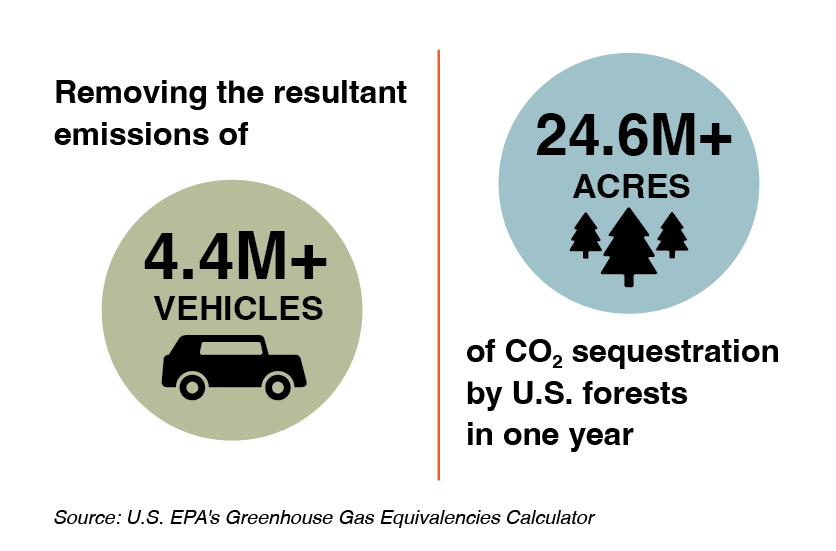
Reducing our Carbon Impact
Over the 10 years, BNSF has upgraded the majority of our locomotive fleet to more energy-efficient technologies, allowing us to increase fuel efficiency and decrease emissions. Improvements in operations and maintenance practices are also contributing to enhanced fuel-efficiency.
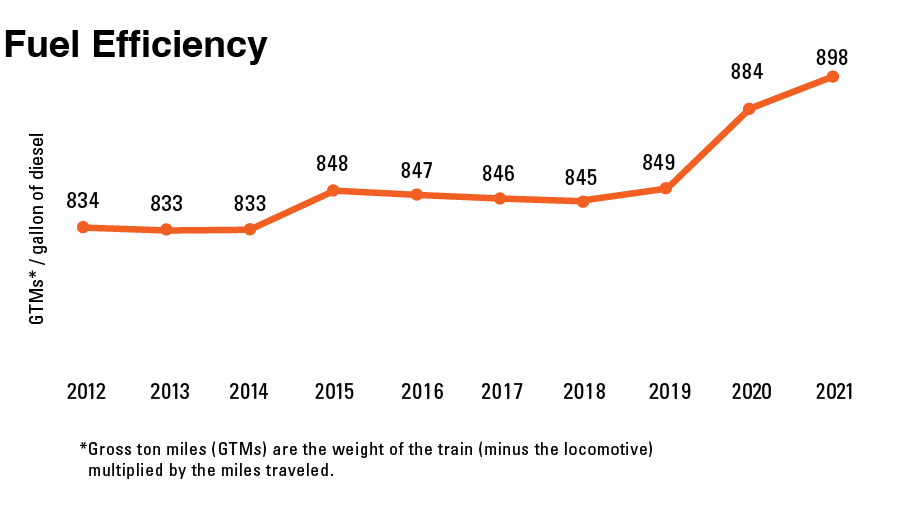
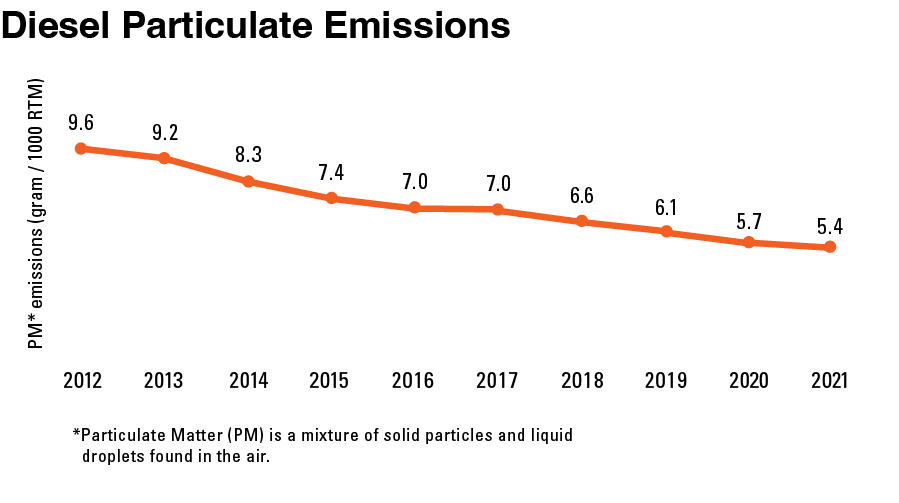
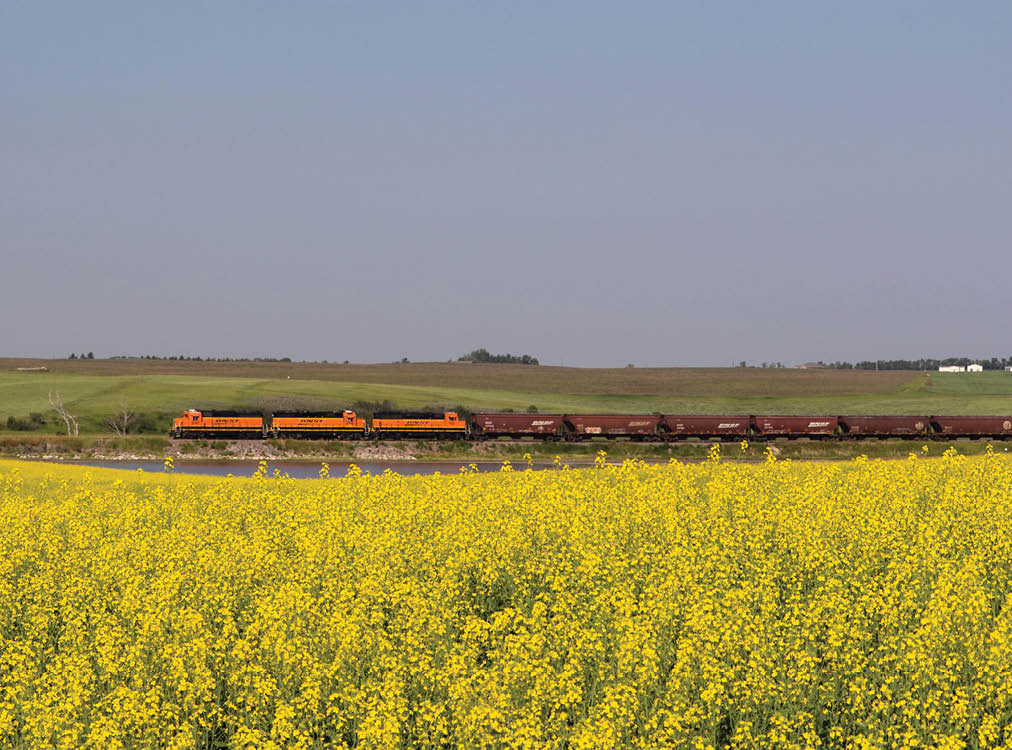
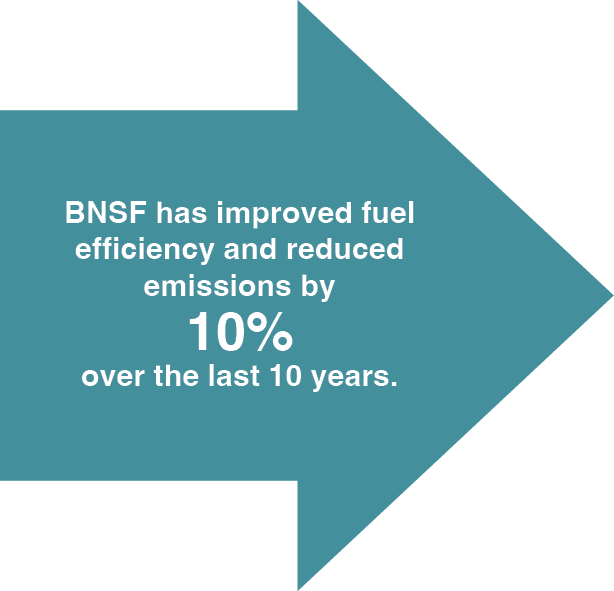
Recycling
BNSF engages in an intensive recycling program. Materials recycled in 2021 included approximately:
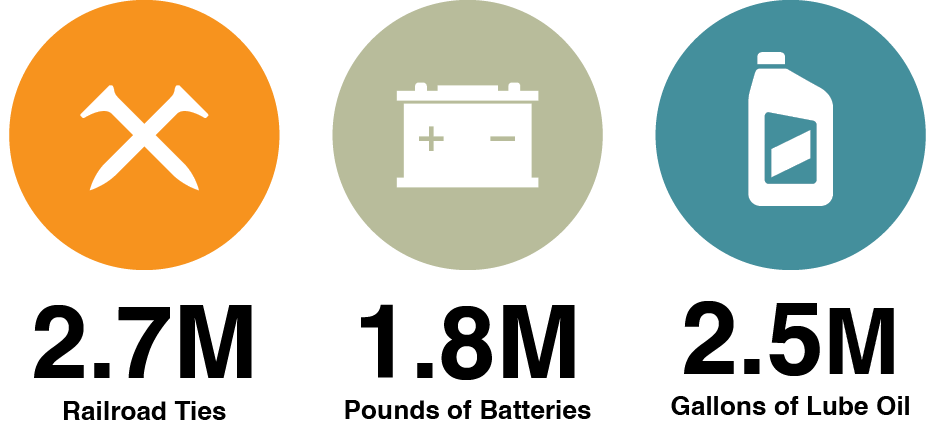
Rehabilitation
BNSF actively addresses environmental impacts at legacy sites – locations where predecessor railroads and others may have conducted operations for up to a century. In the last decade, BNSF has rehabilitated approximately 125 sites and invested approximately $315 million toward remediation efforts.
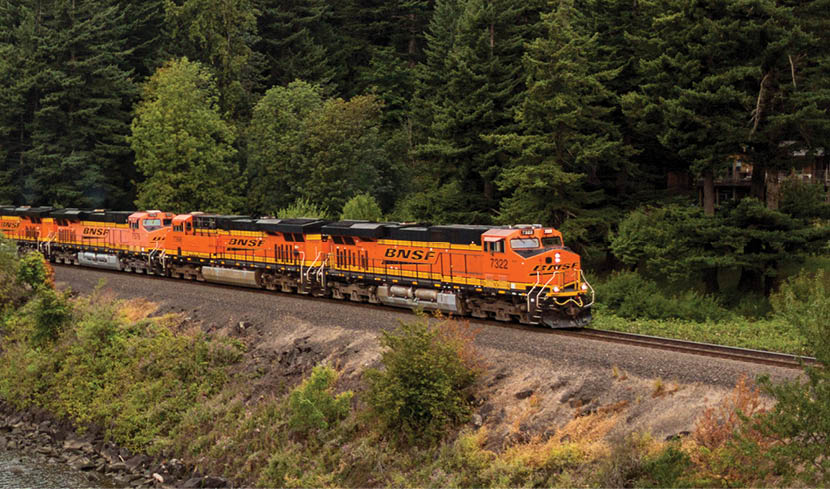
Recognition
BNSF was recognized as a 2021 TxN 20 honoree for our leadership in conservation and sustainability by the Texan by Nature conservation organization.